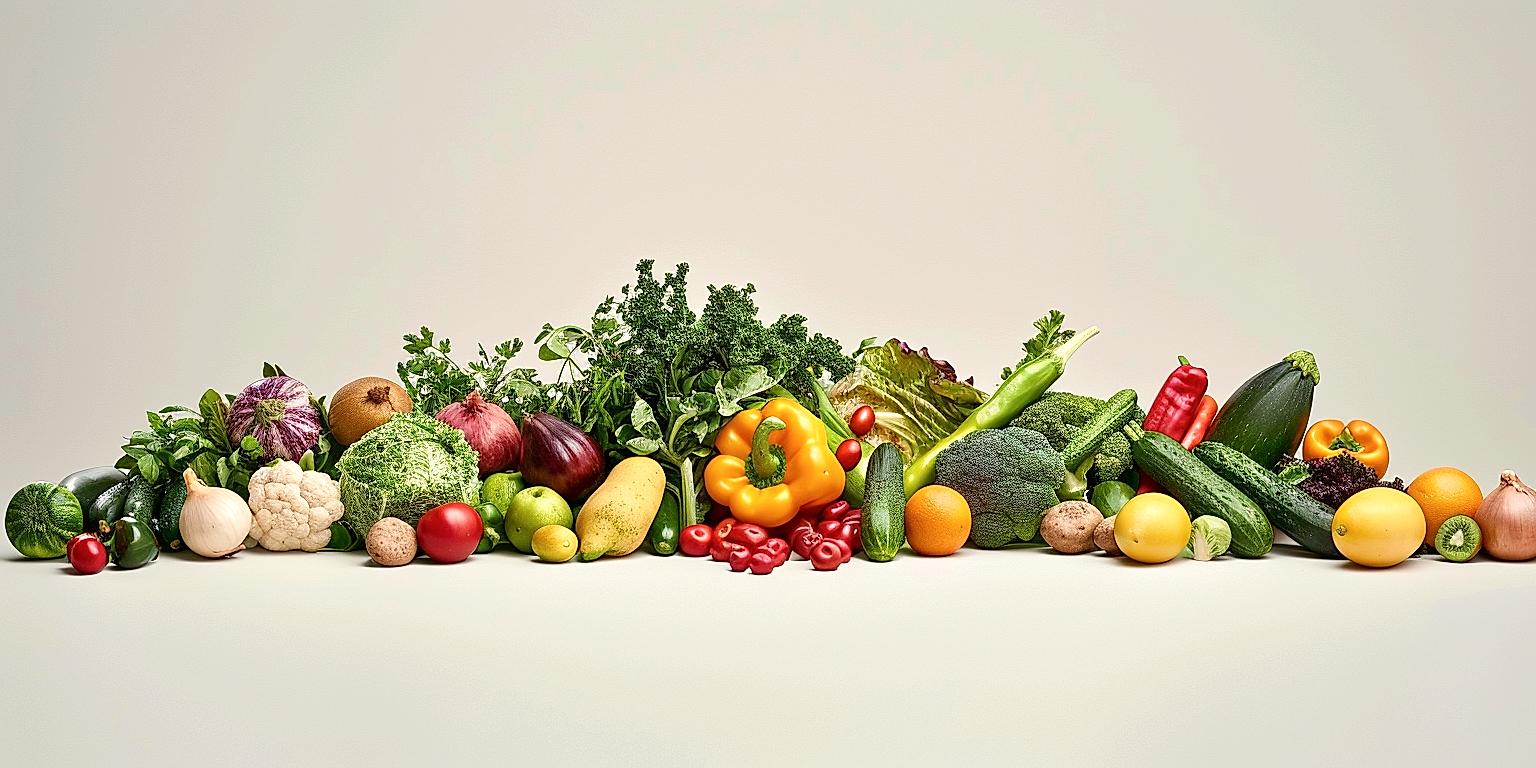Understanding consumer demographics in the produce retail sector is a critical factor for businesses seeking to optimize opportunities and enhance profitability.
Intertwining data with marketing strategies, demographic information helps businesses offer tailored services to distinct market segments.
This write-up delves into the nuances of consumer demographics, specifically in the realm of produce retail.
It is a strategic approach that allows businesses to focus on consumers’ purchasing habits, preferences, and other critical factors.
The complexity of this subject, together with its relevance in today’s economy, necessitates a comprehensive discussion.
Our objective is to provide useful insights for both businesses already operating in this sector and those planning to venture into it.
Insights Into Consumer Demographics For Produce Retail
1. Higher income families purchase more organic produce.
It has been observed that a certain demographic segment, specifically higher income families, has a marked preference towards purchasing more organic produce.
This observation is not entirely surprising since organic fruits, vegetables, and meat products frequently come with a higher price tag compared to their conventional counterparts.
The premium price can be linked to a variety of factors, such as the more labor-intensive methods used by organic farmers, the costs associated with maintaining organic certification, and often, a shorter shelf life due to the lack of synthetic preservatives.
The inclination of higher income families to buy organic reflects their ability to accommodate the higher costs of such products in their budget.
Furthermore, purchasing organic is not merely a reflection of economic capability, but could also be indicative of certain lifestyle choices and values.
For instance, many consumers of organic produce believed that they are not only choosing a healthier option for their families, but also making a more environmentally responsible choice.
The belief that organic farming methods are gentler on the earth, and the perception that organic foods are free of toxic pesticides and are therefore healthier, are common motivators for buyers.
It could be argued that higher income families are also making a statement about their social status when they choose to buy organic.
In some societies, visible consumption of expensive, premium products is a way to signal wealth and sophistication, and organic foods, with their boutique farming origins and artisanal branding, fit neatly into this narrative.
However, it’s important not to stereotype or overgeneralize the motivations of these consumers.
While it’s true that some people might simply be drawn to organic foods as a status symbol, others sincerely believe in the benefits of organic farming for health and the environment.
Additionally, in recent years, increased access to information through digital media has led to higher consumer awareness about various environmental and health issues, driving the growth of the organic food market.
So it’s likely that this trajectory of growing popularity of organic products among higher income families will continue into the foreseeable future.
Finally, amid this surge in demand, it would be crucial for the relevant stakeholders in the retail sector to develop strategies that cater to the specific needs and preferences of these consumers, while maintaining their commitment to sustainable practices.
2. Young adults prioritize locally-sourced fruits, vegetables.
According to recent studies, young adults demonstrate a substantial preference for locally-sourced fruits and vegetables.
This rise in demand for local produce among the young demographic is driven by factors beyond simply taste and freshness.
Young adults, more than any other age group, are intrinsically tied to social, environmental, and economic responsibilities surrounding their food choices.
For many, the importance of supporting local farmers and economies weighs heavily in their purchasing decisions.
They want to know the source of their food, the farming practices applied, and the ecological impact of their choices.
Integrity and transparency in the food supply chain have become significant considerations for this age group.
Recent surveys have found that young adults view local food as more dependable and healthier than conventionally-sourced equivalents.
The notion that locally-sourced produce is fresher and of higher quality adds to its appeal among young adults.
Furthermore, many young consumers associate local food with the maintenance and revival of local food traditions and cultural heritage.
This demographic takes a holistic approach to buying produce, venturing beyond mere consumption and nutritional considerations.
Factors like sustainability, biodiversity, and involvement in the local community all factor into their purchasing decisions.
From farmer’s markets to community-supported agriculture, young adults today are establishing new ways to procure their produce.
However, while these buying behaviors are more prevalent among the young, there are also signs of increased awareness and preference for local produce among other age groups.
This inclination towards local sourcing can reshape retail strategies, offering retailers an important means to differentiate and drive customer loyalty.
It’s essential for businesses to recognize and respond to this shift in consumer values, whether through offering a broader range of local produce or through greater transparency about food sourcing and production methods.
In this way, retailers can meet the demand for locally-sourced produce and appeal to young adult consumers’ sensibilities and preferences.
3. Urban Consumers Prefer Pre-Packaged, Ready-To-Eat Vegetables.
A fascinating trend among urban consumers is their preference for buying pre-packaged, ready-to-eat vegetables.
This demographic is often made up of busy professionals, working long hours in the city, who don’t have the luxury of time to prepare meals from scratch.
Convenience is a key priority for these consumers, which is why pre-packaged vegetables that can be quickly tossed into a pan or microwave offer a practical solution to their dining needs.
The bursting urban lifestyle often requires swift meal options, hence the rise in demand for vegetables that do not require lengthy time for washing, peeling, and cutting.
The emphasis within this group is firmly on speed and convenience, but that doesn’t mean they are willing to compromise on healthy choices.
Even as people are more conscious of their health and diet, they are still seeking out low-effort, high-nutrient solutions.
The demand for ready-made fresh vegetable options within the urban consumer market is indicative of a broader shift in food consumption patterns across the globe.
Ready-to-eat vegetables offer a time-efficient way for these consumers to incorporate wholesome food into their diet.
In terms of retail, this creates an opportunity to provide higher quality, pre-packaged fresh produce that comes with all the benefits of fresh ingredients without the hassle.
It is essential to note that while convenience is a significant factor, these consumers are often willing to pay a premium for this convenience.
This is why upscale grocery stores in urban areas often carry a variety of pre-packaged produce, emphasizing the fresh, natural ingredient and the speed and ease with which a meal can be prepared.
Interestingly, even the packaging plays a major role in this consumer choice, as transparent packaging allows visual assurance of freshness and the quality of the vegetables inside.
Furthermore, many urban dwellers embrace the ready-to-eat option due to limited kitchen facilities in their living spaces or lack of confidence and skills in their culinary abilities.
Therefore, although the initial outlay for prepacked vegetables can be high, the reality of urban living and the pace of modern life make this an increasingly popular choice among urban consumers.
Utilizing this insight, grocery retailers can better cater to the dynamic needs of their urban shoppers through an expanded range of pre-packaged, ready-to-eat vegetables that meet their demand for convenience while maintaining a healthy lifestyle.
4. Families with children consume more fruits daily.
When focusing on the demographics of produce retail, one of the key findings that emerge is that families with children consume more fruits daily.
This stands in stark contrast to demographics such as single adults or elderly consumers who typically do not have as high a fruit intake.
There are various factors that contribute to this trend, many of which reflect broader societal norms and behaviors around parenting and nutrition.
One primary driver is the fact that many parents use fruits as a crucial component of their children’s diet to ensure that they are getting necessary vitamins and nutrients.
For many families, implementing fruits into daily meals—whether as part of breakfast, packed in lunches, or served for dessert—is a vital means of ensuring balanced nutrition.
Beyond daily meals, the consumption of fruits in families with children is often encouraged through targeted efforts towards promoting healthy snacks.
This is backed by dietary guidelines from health organizations worldwide, which underline the importance of fruit as part of a healthy, balanced diet.
Additionally, schools and education institutions themselves often play a role in endorsing fruit consumption through health education programs.
Fruit, due to its convenience and taste, is an easy sell to children as well, making it a go-to snack for time-pressed families looking for nutritious options.
Children’s consumption of fruit often impacts the types of fruits purchased by families, particularly favoring those that are easily portioned, convenient to eat and relatively mess-free.
Overall, the prominence of fruit in families with children’s dietary patterns presents significant opportunities for produce retailers to cater to this distinctive demographic.
An in-depth understanding of this demographic can assist retailers in tailoring their product offerings and marketing strategies to meet the needs and expectations of families with children.
For instance, retailers may opt to emphasize their range of kid-friendly fruit options, such as pre-packaged fruit slices, features in weekly flyers, or even creating dedicated sections within their stores.
In essence, recognizing and responding to the higher fruit consumption in families with children may offer a competitive advantage to those in the produce retail sector.
As the relevance of healthy eating continues to expand, the trends and preferences of this demographic are likely to become increasingly central to the overall landscape of produce retail.
5. Elderly consumers show less preference for exotic produce.
An interesting number with notable significance to produce retailers is the trend among elderly consumers and their purchasing habits of exotic produce.
Historically, there has been a perception that exotic produce is an area dominated by younger, more adventurous consumers.
However, recent market analyses have started to re-evaluate this position, placing more focus on the preferences of the elderly population.
The notion that elderly consumers show less preference for exotic produce can offer an important perspective on this demographic’s consumption patterns.
The factors contributing to this trend are multi-faceted and warrant thorough investigation.
With the growth and diversification of the global food market, the inclination of elderly consumers towards more conventional and familiar fruits and vegetables represents a dualistic dialogue between tradition and modernity.
While there is a current trend among younger consumers to explore and experiment with unfamiliar and exotic produce, the elderly population tends to lean more towards produce they recognized from their earlier years.
Such a preference is not, however, solely driven by nostalgia or conservative tastes, as some might argue.
Health factors also play a decisive role.
With increasing age, people experience various changes in their physiological capacity and nutritional needs, which might make some exotic produce less suitable or enjoyable.
Furthermore, the relative high price and accessibility issues of many exotic produce can be another practical barrier for elderly consumers.
In this regard, a strategic shift towards more conventional produce, both in terms of better meeting their nutritional requirements and their limited budgets, could be observed in this demographic.
This observed trend could also support a shift in marketing strategies aiming to better target and serve this sector of the population.
In retail stores, these findings could influence how and where produce is displayed, to better cater to the elderly consumers’ preferences.
Elderly consumers account for a significant portion of the consumer base for many retailers, and understanding and accommodating their preferences could significantly impact overall customer satisfaction.
The trend towards a lesser preference of exotic produce among elderly consumers indeed offers multiple avenues for insights and strategies for successful produce retailing.
The Bottom Line
The purchasing patterns of various demographic groups clearly highlight the diversity of preferences for produce.
Higher income families often opt for organic produce, reflecting their willingness and ability to pay for perceived quality and health benefits.
Young adults, on the other hand, prioritize locally-sourced fruits and vegetables, possibly reflecting an interest in sustainability and supporting local businesses.
Urban consumers tend to go for convenience, selecting pre-packaged and ready-to-eat vegetables that fit their fast-paced lives.
Families with children show a greater inclination towards fruit consumption, potentially due to dietary needs and preferences of young ones.
Lastly, the elderly demographic demonstrates less interest in exotic produce, possibly preferring familiar and traditional options.
Thus, these observations underscore the varied factors influencing customers’ produce shopping behaviors, ranging from income, life phase, location, to cultural and personal preferences.




